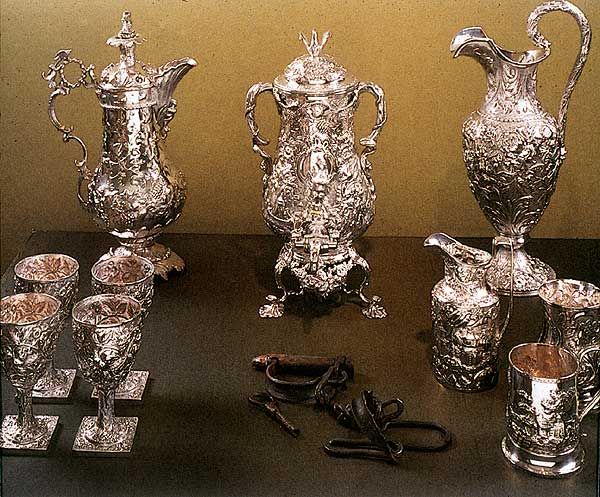A frame is a thought organizer, highlighting certain events and facts as important, and rendering others invisible. Changing the way our issue is presented and perceived will provoke a shift in the public conversation and benefit our movement’s goals.
When designing an action that focuses on framing, some questions to ask include:
- What is the conflict, and what is at stake?
- What hidden forces or new solutions must be revealed?
- What are our underlying values?
- Is there a unifying theme that can create a framing structure for our story?
An Example: Mining the Museum
In 1992, a huge sign appeared on the façade of the Maryland Historical Society announcing that “another” history was now being told inside. The sign referred to African-American artist Fred Wilson’s exhibition project “Mining the Museum,” which presented the museum’s collection in a new, critical light.
Wilson reshuffled the museum’s collection to highlight the history of African Americans. The installation “Metalwork 1793-1880” juxtaposed ornate silver pitchers and goblets with a pair of iron slave shackles. By displaying these artifacts side by side, Wilson created an atmosphere of unease and made apparent the link between the two kinds of metal works: The production of the one was made possible by the subjugation enforced by the other.

